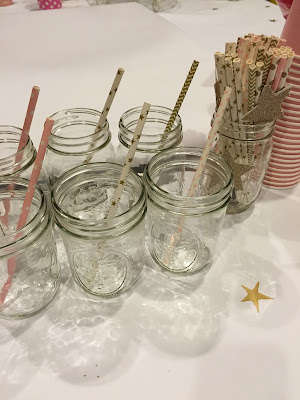Top ten cleaning products to NEVER use...
Are you using the same old toxic cleaners that have been in your pantry since you owned your own home and started making it spic-n-span? What most of people don't realize is how many toxic chemicals are in our everyday household cleaners and how hazardous they are to our families health and environment. Another interesting fact about household cleaners is that the industry is largely unregulated and companies aren't required to include ingredient lists for cleaning products, like they are for food, drugs, and personal care products and the companies are taking advantage of this.
Simple Green All-Purpose Cleaner- this all-purpose cleaner from Simple Green contains 2-butoxyethanol, a solvent known to damage red blood cells and irritate eyes. Despite its “non-toxic” claims on its labeling, this all-purpose cleaner also contains a secret blend of alcohol ethoxylate surfactants; some chemicals in this family are banned in the European Union.
Scrubbing Bubbles-Antibacterial Bathroom Cleaner & Extend-A-Clean Mega Shower Foamer-These products contain chemicals banned in the European Union including DEGBE, which can irritate and inflame the lungs.
Easy-off Heavy Duty Oven Cleaner Aerosol Spray- The chemicals in this cleaner can burn your skin and eyes. The label states to avoid eyes, skin, mucous membranes and clothing. Something this dangerous should not be found in your home.
Target's Up & Up Cleaners- This brand of toilet bowl cleaner, glass and surface wipes list no ingredients whatsoever. I feel like they have something bad that they are hiding...what do you think?
Lysol Disinfectant Power Toilet Bowl Cleaner with Lime and Rust Remover- This toilet bowl cleaner from Lysol even states on the label that it is “harmful or fatal if swallowed”. The label also suggests wearing safety goggles as a bit of this acidic concoction can cause “irreversible damage” to eyes. So not worth a clean toilet.
Ajax, Dynamo and Fab Ultra Liquid Laundry Detergents- How do you feel about washing your clothes in formaldehyde...that's what I thought. Leave it off you shopping list.
Comet Disinfectant Cleanser Powder- This product has one hundred and forty six different chemicals! Some of the chemicals are known to cause cancer, asthma and reproductive disorders. The most toxic of the chemicals found, including formaldehyde, benzene, chloroform and toluene, are not listed on the label.
Citra-Solv Cleaner & Degreaser- This cleaner and degreaser is made from d-limonene and orange oils from citrus peels. Sounds innocent, but when sprayed into the air these oils can react with trace levels of ozone air pollution to form ultra-fine particles that can penetrate deep into the lungs.
Clorox, Fantastik, Febreze, Formula 409, Easy-Off, Lysol, Mr. Clean and Spic and Span- Many of these brand name spray cleaners are laced with ingredients that cause asthma, including quaternary ammonium compounds or ethanolamine. These products spray these dangerous chemicals directly into home's air.
DampRid Mildew Stain Remover Plus Blocker- This bathroom cleaner contains up to 10 percent of a toxic solvent called 2-butoxyethanol. Canada only allows this chemical’s use in non-aerosol cleaners up to 6 percent. As if that wasn’t enough of a hazardous toxin for one cleaning product, this product also includes nonylphenol ethoxylate, a chemical prohibited in cleaners in the European Union.
Once you know the ingredients, you should avoid these seven:
- 2-butoxyethanol (or ethylene glycol monobutyl ether) and other glycol ethers
- Alkylphenol ethoxylates (some common ones are: nonyl- and octylphenol ethoxylates, or non- and octoxynols)
- Dye (companies often hide chemical information behind this word; when it's unknown, it's safer to skip it)
- Ethanolamines (common ones to look out for are: mono-, di-, and tri-ethanolamine)
- Fragrance
- Pine or citrus oil (on smoggy or high ozone days, compounds in the oils can react with ozone in the air to form the carcinogenic chemical formaldehyde)
- Quaternary ammonium compounds (look out for these: alkyl dimethyl benzyl ammonium chloride (ADBAC), benzalkonium chloride, and didecyl dimethyl benzyl ammonium chloride)
































